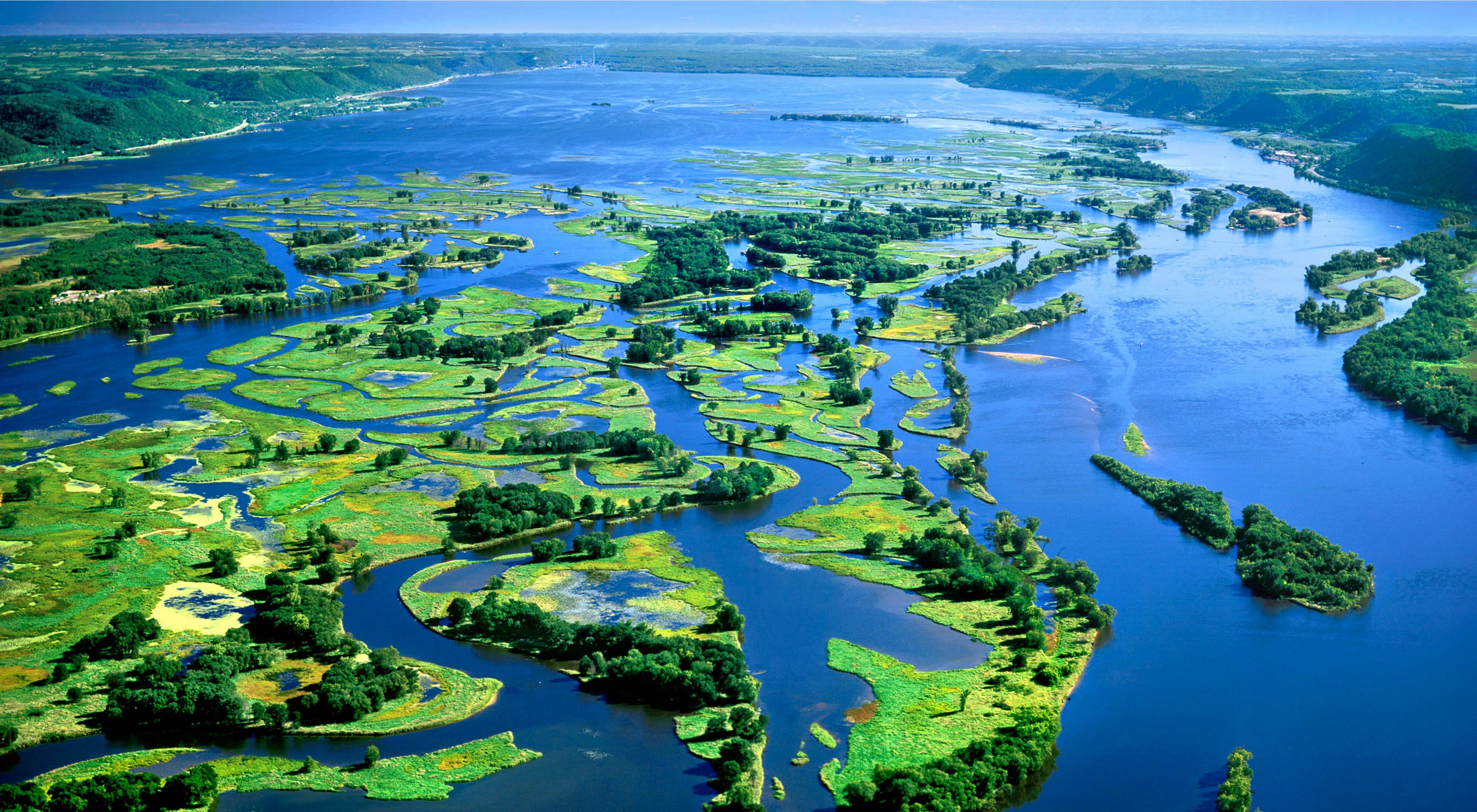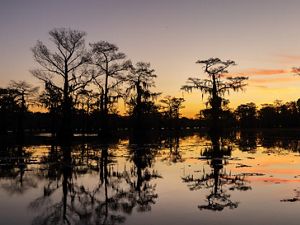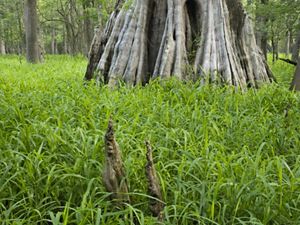Environmental Pool Management: Modernizing Lock and Dam Operations Produces Benefits
Restoring a Degraded River System
Historically, the Upper Mississippi River was a mosaic of channels, backwaters, sandbars and wooded islands influenced by spring floods and low summer flows. But these seasonal changes created unreliable conditions for river navigation. By 1930, after years of debate, construction began on 37 locks and dams on the Upper Mississippi and Illinois rivers to maintain a 9-foot-deep navigation channel.
Decades of impounding the river degraded natural habitats and processes. River flow slowed. Islands and shorelines eroded from constant water levels. Meanwhile, backwater channels and lakes filled with sediment. The need to restore these valuable habitats was obvious, and with the strong support of the river managers and the public, a federal program then called the Upper Mississippi River Restoration Environmental Management Program was established in 1986. Today it’s known as the Upper Mississippi River Restoration, or UMRR. Since 1986, over 114,350 acres of these natural river habitats have been restored with funds from this program.
As successful as this program is, options for restoration beyond the authority of UMRR are necessary to further restore natural habitats in the Upper Mississippi River region. Carefully reoperating dams to maintain navigation while benefitting the environment provides such opportunities. The Nature Conservancy leads and supports this work on the Upper Mississippi River.
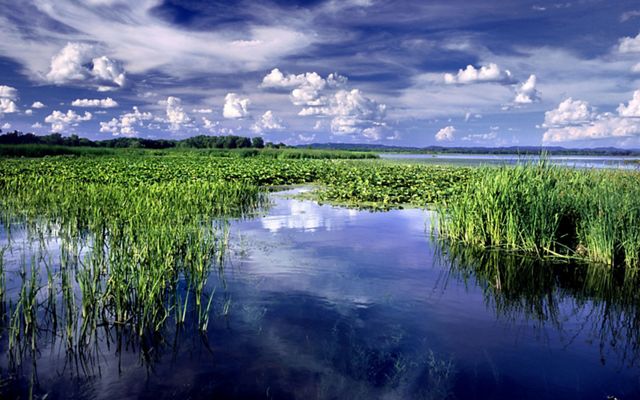
Small Changes, Big Results
Since 1994, the U.S. Army Corps of Engineers has helped improve the health of the Upper Mississippi River by making modest changes to the operations of six locks and dams there.
While some of these operational changes—known as “environmental pool management”—have taken place annually and others only once, both have proven water reductions of a mere 1-2 feet can expose thousands of acres of mudflats that create optimal conditions for aquatic plants to flourish and in turn attract and benefit wildlife, such as fish and waterfowl.
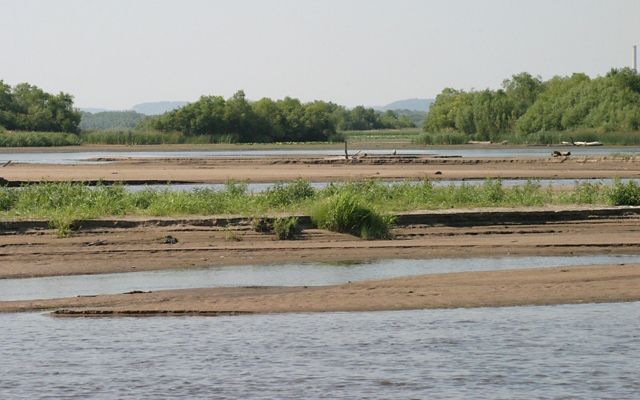
Environmental Pool Management: How it Works
Since the construction of the dams, higher water levels have essentially drowned the diverse communities of aquatic plants and altered chemical processes in the river sediment. By reducing water levels in the pools upstream of dams between 1 and 2 feet below routine summer levels, thousands of acres of mudflats are exposed. As the sediment dries, it creates optimal conditions for dormant, native aquatic plant seeds to germinate and regenerate. These plants, which provide habitat for fish and wildlife, serve as the foundation of the ecosystem. They process nutrients, trap water-borne sediment and stabilize the shoreline. In Pools 24-26, drawdown is achieved with little to no cost, while in Pools 5, 6, and 8 it is more expensive because the operations of the dams here prescribe much tighter restrictions in the fluctuation of water levels.
To help ensure other uses like navigation and recreational boating are not overly inconvenienced, the Army Corps manages the main channel depth for commercial traffic. Other partners have funded public access dredging, marked safe recreational boating routes and publicized drawdown conditions to the public. These actions allow people to use the river for transportation and recreation while it is managed for the recovery of valuable natural habitats.

Quote: Gretchen Benjamin
We are much smarter about dam operations today than we were decades ago. Dam operations can support more natural seasonal flows and water levels for fish, wildlife and habitat, while still providing important services.
Environmental Pool Management Grows Results
Monitoring has shown up to 70 plant species growing on mud flats that are exposed during the drawdowns, including several that serve as important food sources for waterfowl. After two years of drawdown in Pool 8, scientists documented a 16-fold increase in tuber (or root) production of the common arrowhead, an essential food for migratory tundra swans. In 2006, monitoring at Pool 5 showed that use among tundra swans, diving ducks and dabbling ducks—like mallards and blue-wing teal— was the highest recorded in 10 years. In Pool 8, researchers noted that dabbling ducks changed their feeding patterns to use the areas that responded best to the drawdowns, and the ducks’ use in subsequent years was concentrated in those areas as well. Since 1994, drawdowns have also benefited native plant growth in the pools above Lock and Dams 24-26 near St. Louis.
Projects like these underscore the value of revisiting the operation plans of water infrastructure to ensure today’s needs are being met. Across the U.S. there are dozens of lock and dams where similar changes in operations could improve the health of rivers and benefit wildlife and surrounding communities.
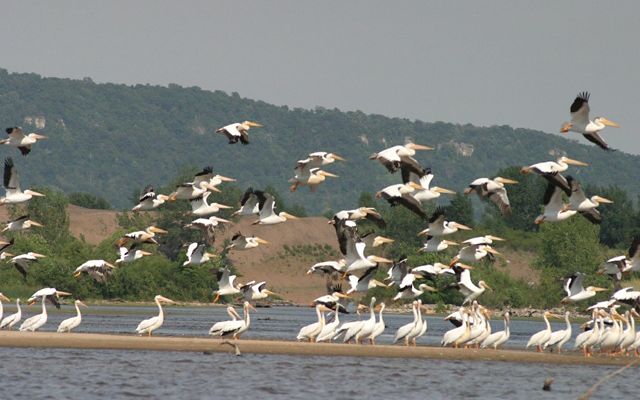
The Nature Conservancy’s Approach
Promoters of environmental pool management are asking the Corps to operate the dams differently. Working with partners, TNC must prove this technique has ecological benefits and is easy to implement.
-
Adaptively manage pool drawdowns in Pools 24-26. After 20 years of drawdowns, the Army Corps was asked to increase the length of time they reduce summer water levels from 30-40 days to 90+ days to shift response to a mix of annual and perennial plants. The Corps agreed, provided river flow is adequate and the partners monitor the response. TNC is leading and supporting this collaborative work.
-
Enable conditions to make environmental pool management routine. Depending on dam operations at each site, drawdowns can be difficult to implement. TNC and its partners have persuaded the Corps to evaluate the key factors that would be necessary to make drawdown a routine option within the Upper Mississippi River system.
For more information, contact
Gretchen Benjamin, Associate Director of Water Resources, The Nature Conservancy.
